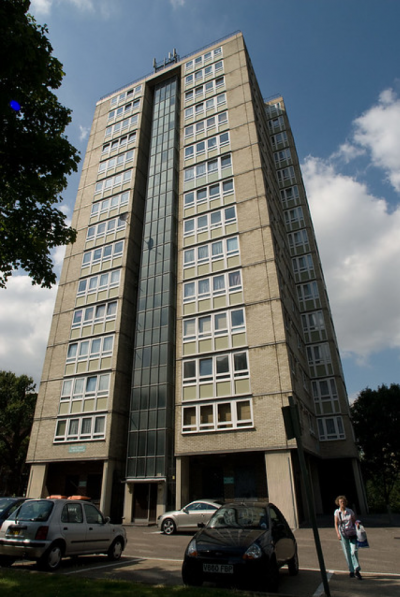The Wandsworth Sprinkler Decision: Property as Power and Resistance
The title of this post draws on the opening essay written by Janet McLean in her edited book, Property and the Constitution. In this, she writes that property ‘can be regarded both as a method of conferring authority and as a counterpose against such authority’. Her essay explored the issue of what it means for property to be ‘public’, yet it provides a useful lens through which to illustrate some of the post-Grenfell tensions in relation to blocks of flats, as demonstrated in the saga of the proposal by the London Borough of Wandsworth to install sprinklers in around 100 blocks of ten storeys or more.
Posted:
Time to read:

Wandsworth reacted very quickly following Grenfell. As early as 28th June 2017 (only 14 days after the fire), it was proposed to draw up a programme of works for the installation of sprinklers in 100 blocks. By September 2017, the Housing and Regeneration Overview and Scrutiny Committee recommended (i) embarking on a retrofit programme with the cost of works being recharged to leaseholders and (ii) ‘ensuring consultation with residents; giving appropriate authority to the most vulnerable buildings; and reviewing the programme in the light of the Grenfell Tower Inquiry and recommendations arising from the Inquiry’. Later that month the Executive accepted those recommendations. As leaseholder concerns emerged, a further decision was taken in January 2018 to make an application to the FTT ‘to ensure that the leaseholders’ voice is listened to and to seek a clear decision on the Council’s ability to undertake the works’.

The formal application to the FTT in July 2018 sets out the issues differently to the way that the Committee’s decision was framed in January 2018. It was noted that the intention was to install sprinklers into each room of all properties (excluding bathrooms), but that none of the proposed works were yet available and there had been no statutory consultation. It was, seemingly, an application to determine if, in principle, having regard to the particular leases, the costs would be ‘contractually recoverable’.
A number of leaseholders later applied for the application to be struck out, arguing, under the Landlord & Tenant Act 1985 and the relevant procedural rules, that the FTT had no jurisdiction to deal with the application, the application was an abuse of process, and there was no reasonable prospect of it succeeding.
The FTT decision explains that determining the payability of service charges depends on ‘what the lease says about the particular works or services and what it says about a leaseholder’s obligation to pay’. In Wandsworth, there were 3 different forms of lease, but each included a reference to doing things that the council ‘may decide are necessary’ in relation to maintenance etc. of the block. The leaseholders argued that Wandsworth had failed to show that (a) it had made a decision to install sprinklers, and, therefore, (b) it could not have decided that sprinklers are necessary. Tracking through the decision history, the Tribunal found that Wandsworth had reached a conditional decision, and that was sufficient for the purposes of its application.
However, the blanket nature of the application was problematic. There had been no ‘consideration of “necessity” on a block by block basis’, and therefore no reasonable prospect of Wandsworth showing that the service charge costs were recoverable under the leases. In an earlier case management hearing in October 2018, leaseholders had pointed out that the blocks were differently constructed, and sprinklers may not be necessary for all blocks. In the strike out decision, the Tribunal noted a ‘real concern that the works may not be necessary in some blocks and may cause damage to compartmentation in others’. To ask the FTT to make a decision ‘in principle’ was an abuse of process (a term which the FTT is careful to explain does not mean that there is impropriety). Without detail of what works would be involved, the FTT had no jurisdiction and there was no realistic prospect of the case succeeding.

Writing in 1999, the Grays noted there may be a fork in the road ahead: whether to ‘reinforce a steadily growing culture of exclusion or . . . instead, take steps to generate a rather different culture of community’. We have now reached that fork. Property as ‘exclusion’ (Grays) or as ‘resistance’ (McLean) enables those leaseholders wishing to challenge landlords’ actions to do so, as it enables them to have a ‘private zone of autonomy’. Translated practically, this means that leaseholders, granted exclusive possession under the lease, can refuse access to the landlord unless there is a specific right of entry for the intended purpose reserved to the landlord by the lease wording. It must be doubtful that this exclusionary approach continues to be appropriate in blocks where the safety of the whole community requires there to be safety within each individual part.
Property ‘as authority’ confers the power to govern, but it is inappropriate for a landlord to have the unilateral power to decide to undertake works (or not to do so) which intrude into the leaseholder’s home, and for which the leaseholder might have to pay, without there being a form of meaningful dialogue. As I’ve argued elsewhere, the idea that ‘my home is my castle to which I may bar entry’, fails to acknowledge the interconnectedness and interdependency of ownership within a block of flats. It is necessary to rethink the idea of ownership in relation to multi-owned properties to focus on their communal nature and to reconsider the question of where control should lie. Although the practical decision to retrofit sprinklers may seem far removed from these deeper theoretical questions, they bring to the fore the need for us to address these core questions about how blocks of flats are owned, and how power is distributed by property law.
__________
How to cite this blog post (Harvard style)
Bright, S. (2020). The Wandsworth Sprinkler Decision: Property as Power and Resistance. Available at: https://www.law.ox.ac.uk/housing-after-grenfell/blog/2020/01/wandsworth-sprinkler-decision-property-power-and-resistance (Accessed [date])
Share:
